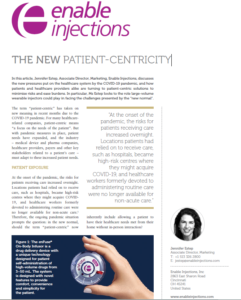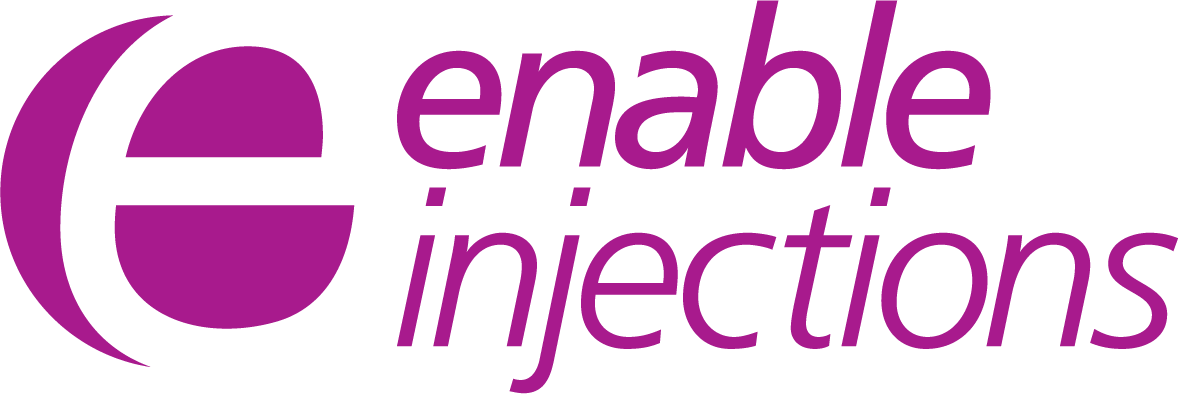
The New Patient-Centricity
The following excerpt is originally published at OnDrugDelivery September 2020 issue, linked here.
THE NEW PATIENT-CENTRICITY
The term “patient-centric” has taken on new meaning in recent months due to the COVID-19 pandemic. For many healthcare-related companies, patient-centric means “a focus on the needs of the patient”. But with pandemic measures in place, patient needs have expanded, and the industry – medical device and pharma companies, healthcare providers, payers and other key stakeholders related to a patient’s care – must adapt to these increased patient needs.

The New Patient-Centricity | OnDrugDelivery September 2020
PATIENT EXPOSURE
At the onset of the pandemic, the risks for patients receiving care increased overnight. Locations patients had relied on to receive care, such as hospitals, became high-risk centres where they might acquire COVID-19, and healthcare workers formerly devoted to administering routine care were no longer available for non-acute care.1 Therefore, the ongoing pandemic situation prompts the question: in the new normal, should the term “patient-centric” now inherently include allowing a patient to
have their healthcare needs met from their home without in-person interaction?
Due to COVID-19, changes in the healthcare system have occurred in a fraction of the usual time. From the patient perspective, Medicare reports a surge in US telehealth visit numbers – from 13,000 beneficiaries pre-pandemic to nearly 1.7 million beneficiaries in the final week of April 2020.2 In hitherto unseen numbers, patients are turning to technology to enable telehealth visits with healthcare providers, which accommodate these new patient needs by allowing for the remote continuation of care.
The risk of exposure to COVID-19 has prompted change from the healthcare provider side as well, including the need to protect patients from exposure at healthcare facilities and prioritise keeping healthcare resources free for acute care. Because of these and other factors, some listed hereafter, large-volume wearable injectors, such as Enable’s enFuse® On-Body Infusor (Figure 1), are likely to be essential elements making this extensive positive shift in healthcare possible, especially on the accelerated timescale mandated by pandemic conditions.
PATIENT BURDEN
Large-volume wearable injector technology may help to reduce patient burden in several ways (Figure 2). For example, large-volume wearable injectors can:
• Enable patients to receive therapeutics at home. Once a therapeutic has been formulated and approved for subcutaneous administration, a patient may be able to self-administer their prescribed therapeutic via a large-volume wearable injector in their home,
whereas they would have previously needed to have their therapeutic administered in a healthcare facility via intravenous administration.
• Reduce the need for a healthcare worker to administer care. The demand for healthcare workers has increased with COVID-19. Large-volume wearable injectors may reduce, or even eliminate, the need for healthcare workers to administer infusions, therefore making them available for urgent COVID-19-related care.
• Reduce patient and healthcare worker exposure. Healthcare workers, patients and caregivers are all exposed when infusions are conducted in person.
Even for situations with a home-infusion set up, a healthcare worker typically has to enter a patient’s home and spends hours in close contact with them during the infusion. Large-volume wearable injector technology has the potential to reduce the need for in-person administration, which reduces the exposure for all involved.
• Reduce the need for patients to leave the home for their healthcare needs. A large-volume wearable injector has the potential to be shipped directly to a patient’s home.
• Communicate data automatically through digital technology. Telehealth-enabled infusion devices allow a patient’s data to be communicated directly with key stakeholders involved in their care. A large-volume wearable injector with digital communication technology would potentially allow the healthcare provider, and others involved in a patient’s care,
to receive updates on the patient’s infusion, as well as reportable metrics which may verify infusion information and patient adherence.
• Reduce the financial burden of therapy. The needs of a patient also extend to their financial burden. By reducing the need for expensive visits to a healthcare facility for infusion, large-volume wearable injectors have the potential to provide economic benefits for the patient and payer, in addition to the healthcare benefits already discussed.
AN ECONOMIC MODEL
Enable Injections has worked with experts in healthcare decision modelling to develop an interactive model that can be used to evaluate the budget impact and cost-effectiveness consequences of an at-home wearable injector.
Click here to read the remainder of the article at OnDrugDelivery.
